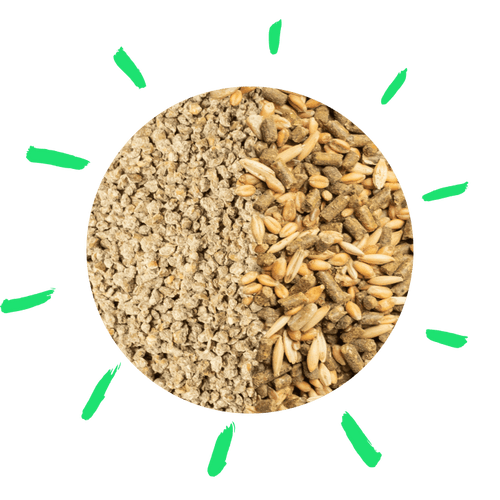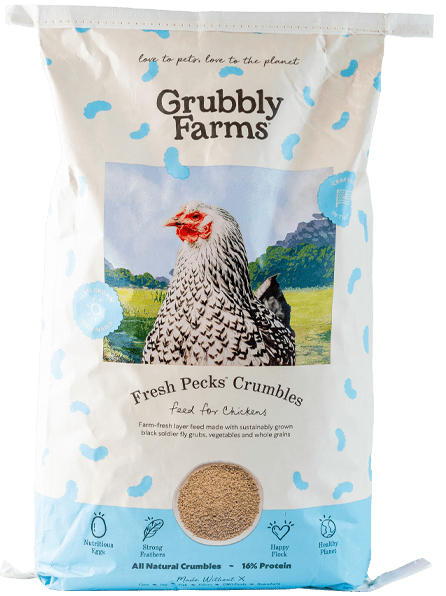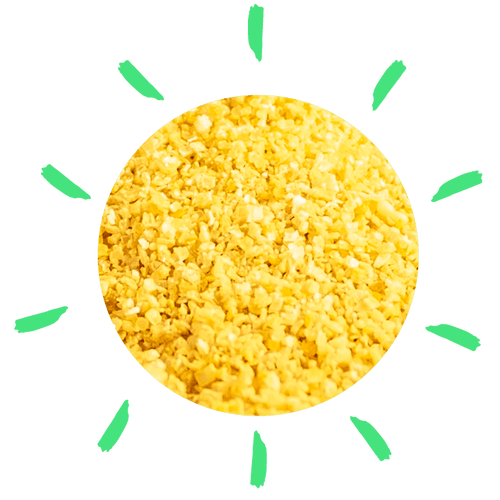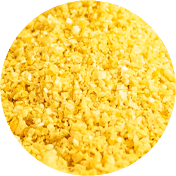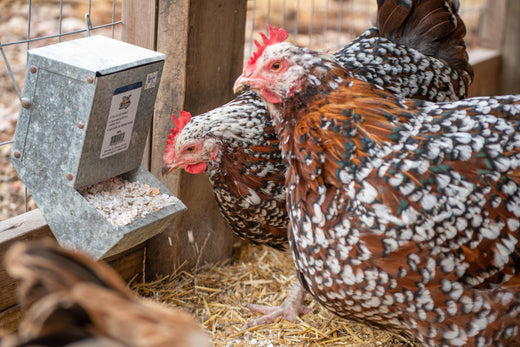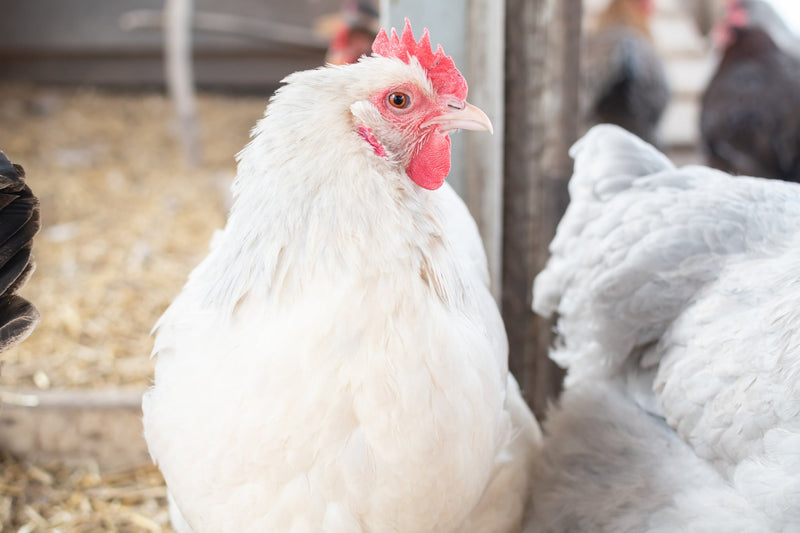A cross beak, or scissor beak chicken may first appear like a comical sight! However, it can be quite alarming if you don’t know about cross beak and how to care for a chicken who has it. It’s important to remember not all cross beaks are the same. Cases can range from minor to severe, but in either situation the chicken needs special care to keep it healthy. Don’t worry though, chickens with a crossed beak can live a happy life when cared for properly!
What is Cross Beak?

The condition known as ‘cross beak’ occurs when a chicken’s beak misaligns. More specifically, the top mandible (top portion of the beak) crosses over the lower mandible (bottom part of the beak) creating a gap when the beak should be closed. If left unchecked, the top mandible of the beak will continue to grow and curve down over the lower mandible. Cross beak is also known as scissor beak, crossed beak, scissors beak, crooked beak, lateral break deviation, or parrot beak.
Whatever you choose to call it, cross beak can range from a minor condition to a more severe one. Chickens with a minor cross beak are usually not inhibited in too many ways and can still use their beak for most normal behaviors. The upper and lower mandibles are off just enough to appear abnormal, but not enough to be overly detrimental to daily behaviors such as eating and drinking.
In severe cases, the beak is so severely misaligned that it can be difficult for a chicken to eat or drink properly. In most cases, a crossed beak chicken will adapt its eating and drinking behaviors. A chicken with severe cross beak will often scoop at its feed and water and will have a difficult time eating food off flat surfaces or foraging.
What Causes Cross Beak?

It can be hard to identify the cause of a chicken’s crossed beak. A chicken with cross beak will usually have the condition starting at a young age and will remain with the condition for life. If you notice the condition immediately after birth, you can narrow down the cause.
Genetics, mispositioning, or improper incubating conditions are the most common causes of cross beak in chicks with signs typically showing at hatch or within a few days afterward. In some cases, a chick who is not properly positioned inside the egg can develop a malformed skull which can lead to cross beak. Poor breeding or improper incubation can also lead to cross beak at a young age.
If the cross beak condition does not show up until 4-12 weeks of age, then the cause may have more to do with an injury or nutritional deficiency. Injuries to the face or skull can also cause the beak to grow improperly in young chickens. A deficiency in vitamin D, folic acid, biotin, methionine, or calcium can also cause improper growth.
To identify cross beak in young chicks or chickens, watch for these signs and symptoms:
- Beak Shape - watch for any signs of the upper mandible part of the beak not properly aligning with the lower mandible.
- Slow Growth - chicks with cross beak will often have a slower overall growth rate due to inhibited eating. This will result in a smaller adult.
How to Fix a Cross Beak Chicken
Cross beak originates from within the skull where the two beak mandibles converge, meaning fixing a cross beak condition can be painful for the chicken and is often impossible. A cross beak chicken can usually not be cured of its condition even if the cross beak is a result of injury or a nutritional deficiency.
For severe cases of cross beak, it can be beneficial to trim the beak to help keep the condition from progressing so much as to be painful or to completely inhibit eating and drinking. Fun fact: A chicken’s beak is made of the same material as our fingernails (keratin), meaning it continually grows throughout their lives. For a cross beak chicken, the upper mandible will continue to grow over the lower mandible and will eventually start to curve downwards. This can make it hard for the chicken to peck at its food or at the ground. Trimming the curved top mandible and straight lower mandible can make it easier for a crossed beak chicken to peck at food.
How to Trim a Chicken’s Beak

To properly do a beak trimming you will first need someone to securely hold the chicken while you trim the beak with nail trimmers. Heavy duty toenail clippers or dog nail trimmers often work well for beak trimming. Gently wrap the chicken in a towel to secure the wings and have your helper hold the chicken to gently secure its legs. When trimming the beak, you want to trim just the tips of the upper and lower beak mandibles, which are often lighter in color. Similar to trimming your dog’s nails, avoid cutting too much which may expose the quick, or nerve, within the beak. If you do frequent, short trimmings you can encourage the nerve within the beak to retreat, making it easier to keep the beak short and manageable. It can also help to gently file the beak after trimming off the tips from the upper and lower mandibles.
As mentioned previously, a chicken’s beak continually grows. For a chicken with a normal beak, it can wear it down as it pecks at hard surfaces, forages, and goes about normal activities. A chicken with a crossed beak will have a harder time keeping the beak worn down. Cross beak chickens often benefit from easy access to a brick or paver for them to scrap their beak on.
How to Feed a Cross Beak Chicken

A chicken with cross beak will need special care, especially when severe. Not only will the chicken need some modified eating and drinking systems, but it may also benefit from some regular health and beak maintenance.
Since a crossed beak can make it hard for a chicken to eat off a flat surface, it is often helpful to provide deep food and water dishes. Place the food and water dishes in locations that are easy to access (ideally low to the ground to make scooping the food easier). Make sure the food dish and water dish are always full as other flock members may want to partake from the special dishes as well!
Layer mash feed or a whole grain feed is easier for a cross beak chicken to eat than pelleted layer feed. Layer crumbles can also be easier to eat since the pieces are smaller and easier to scoop up with a crossed beak. Serving wet or fermented feed can further simplify the eating process. Wet feed sticks together better and can be scooped up in greater volumes. Plus, chickens seem to love moistened feed! Fermented feed is great for cross beak chickens since the feed’s nutritional value is increased. The chicken can eat less food on a given day and still meet its nutritional needs.
How to Prevent Cross Beak

You can take measures to prevent some causes of cross beak in chickens. If you incubate and hatch chicks, make sure you are hatching eggs that come from good breeding stock who are fed a complete breeder feed. You will also want to make sure your incubator settings are ideal for incubating and hatching the eggs (99.5 - 102 F depending on airflow). When it comes to raising chicks, ensure that your chicks are being fed a proper diet of a complete chick starter feed. Keep the brooder a safe place and avoid conditions that could cause the chicks to be startled suddenly, fall, or otherwise be injured.
Conclusion:
Cross beak chickens are often charismatic and highly food motivated, quickly becoming a special character in your flock! Even though a crossed beak can make it hard for a chicken to eat or drink properly, a couple changes to your routine ensures they not only survive but live a happy life and thrive. Learning how to best care for your cross beak chicken can make the condition less alarming for you and easier to live with for the chicken!










